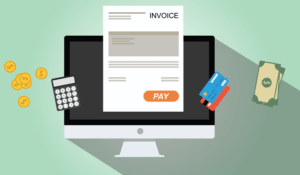
Under DuPont analysis, we need to use three ratios to find out the return on equity. A higher equity financing gives the company a flexibility to raise capital from investors without the obligation to pay it back in full amount with interest. If the company has effectively used its assets and is showing a profit that is high enough to service its debt, then incurring debt can be a positive strategy. However, this strategy exposes the company to the risk of an unexpected drop in profits, which could then make it difficult for the company to repay its debt.
A Beginner’s Guide to Effective WhatsApp Marketing in 2024
- The equity multiplier is also known as the leverage ratio or financial leverage ratio and is one of three ratios used in the DuPont analysis.
- An organisation’s equity multiplier can be heavily influenced by its capital structure.
- Both low and high equity multipliers have their positive and negative sides.
- A high equity multiplier indicates that a significant portion of a company’s capital structure is debt, which requires regular interest payments and can strain cash flow, particularly if revenues decline.
- Companies can manage their equity multiplier by carefully controlling the level of debt they take on relative to their equity.
The Index is an excess return index, which means that it captures the returns of the underlying constituents which are in excess of a short-term interest rate. All else equal, higher short-term interest rates would result in an excess return index to underperform a non-excess return version of the same index. Similarly, in the insurance sector, regulators use the equity multiplier as a tool to assess the financial health and risk levels of an insurance company. Insurance companies with a high equity multiplier might have more financial leverage but at the same time pose a higher risk.

Equity Multiplier in the Insurance Industry

Indexed interest on the other hand, is based on changes in an external market index. The sustainable withdrawal rate suggested for a typical retirement is no more than 4% to 5% of your savings in the first year, adjusted for inflation every year after that. For retirement before age 62, Fidelity suggests aiming for a conservative withdrawal rate of 3% to help ensure that your money lasts throughout your retirement. Understanding the role of the equity multiplier in the DuPont Analysis is key to deciphering how it contra asset account impacts the Return on Equity (ROE).
Comparing the Equity Multiplier with Other Financial Ratios
Companies finance their operations with equity or debt, so a higher equity multiplier indicates that a larger portion of asset financing is attributed to debt. The equity multiplier is therefore a variation of the debt ratio, in which the definition of debt financing includes all liabilities. The equity multiplier is often compared with other financial ratios to provide a comprehensive view of a company’s financial health. This simple ratio reveals the relationship between a company’s total assets and its equity. For example, if a company has total assets of $500,000 and total equity of $200,000, the equity multiplier would be 2.5.
Success factor adjusted to three-year period

The above upper-funnel channels work to increase brand visibility, shape perception, and ultimately expand the base of future buyers – something that performance tactics alone cannot achieve at scale. A what is an equity multiplier common example of siloed operations is the separation between e-commerce and brand teams within many organisations. E-commerce teams are typically focused on immediate, performance-driven metrics such as sales, conversions, and traffic. In contrast, brand teams are tasked with long-term goals like customer loyalty, brand awareness, and reputation.

Thus, the equity multiplier deserves due attention in any discussion related to corporate social responsibility and sustainability. Equity multiplier, or financial leverage ratio, can offer crucial insights regarding corporate sustainability and social Bakery Accounting responsibility. This ratio can have deep implications regarding a company’s financial health and overall risk management strategy. On the other hand, the debt ratio quantifies the proportion of a company’s total assets that are financed by creditors, rather than investors.
Understanding the Equity Multiplier: A Comprehensive Guide for Financial Analysis
Multiplier Capital is a $1.1+ billion growth debt platform that partners with rapidly scaling venture- and private equity-backed technology companies. Our proven track record reflects a deep understanding of the venture and growth equity ecosystem and a commitment to long-term partnership. This straightforward crediting method determines the highest index value of the external index at market close of any given day during the crediting period. It provides valuable insights into the financial structure and risk profile of companies in these sectors. Through this risk management lens, the equity multiplier becomes a useful tool for decision-making in various areas such as capital acquisition, resource allocation, and strategic planning.
